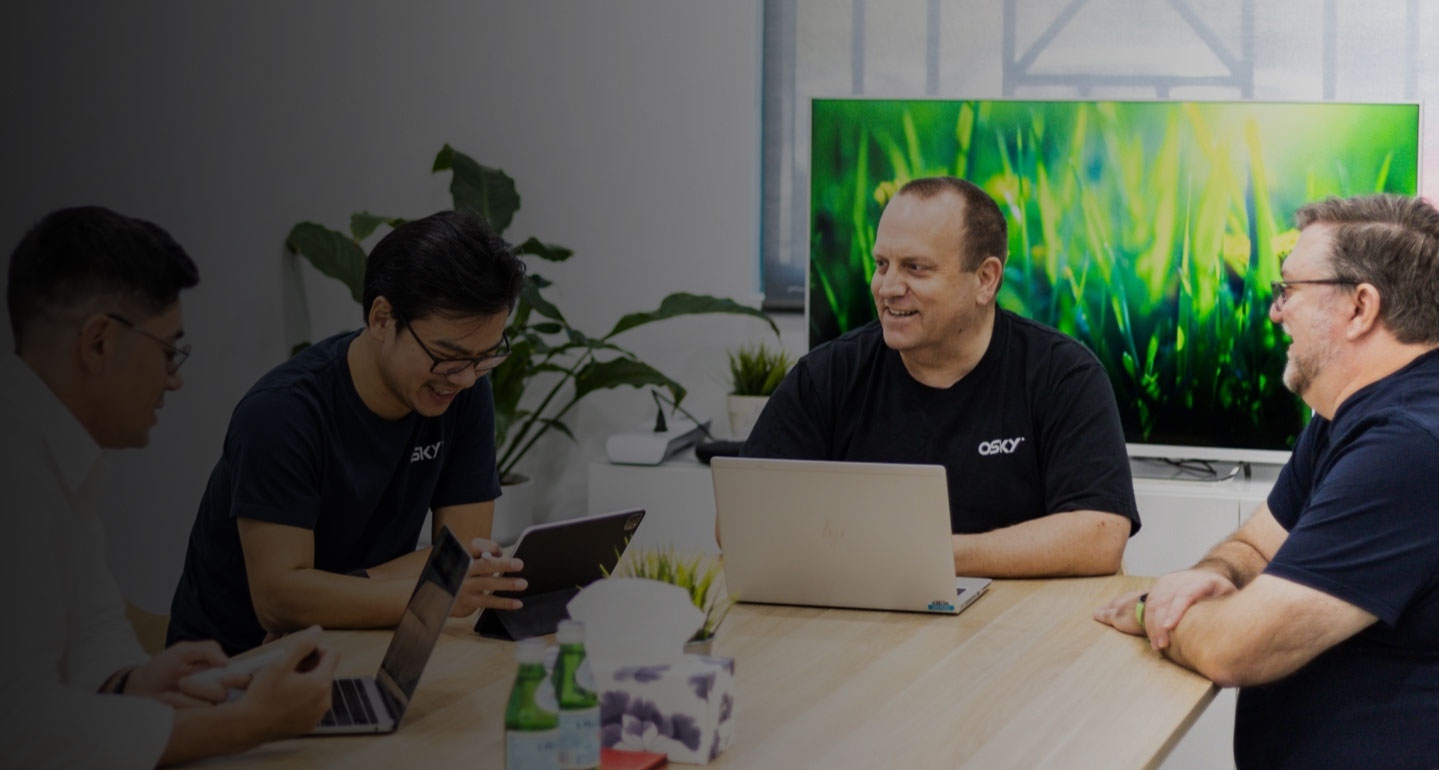One of the most important things before launching a website project is the Discovery process. Having a discovery process will help reduce project costs, enhance team productivity, a shorter development cycle, and a great website.
At OSKY, we make sure we give you the best value for money. This is why we take the time to go through…
…Our 8-step Discovery Process
- Consultation – OSKY will provide a free consultation for the initial phase of the project. This is the first meeting between a project team and key stakeholders to set expectations regarding business goals, web design strategy and planning the process, among other key information needed for the project.To book an initial consultation, follow this link.
- Artifact Analysis – this is a process whereby the OSKY team will review and map out your existing technology to provide appropriate recommendations for an optimal solution to suit your budget.
- Discovery Workshop – during this step, our lead engineer and business analyst will deep dive into the business requirements to create a framework of the project through the following processes:
- User story – At this point of the discovery process, it’s important to understand who’s coming to your website, therefore, we need a user story. This is one or more sentences to capture a path a user may take to reach their goal when using a particular website. It’s a process of fleshing out the user’s thoughts and emotions in order to create a meaningful narrative.
- Architecture design/ structure – This refers to the way a website is structured to make sure we meet your goals, while at the same time delivering a great experience for the users.
- Functional requirements – define the basic system behavior. These are the documented product features and functions that developers use to build your website. Functional requirements are important for both you and our developers to build a website that helps your clients accomplish their tasks.
- Wireframes – also known as screen blueprints or page schematics. The wireframe depicts the page layout or arrangement of the website content, including interface elements and navigational systems and serves as a visual guide that shows the skeletal framework of a website.
- UI/UX Design – User Interface design (UI) and User Experience (UX) are two different elements that are crucial to the development of a website/ software. The UX designer will map out the invisible, behind-the-scenes side of website design while the UI designer makes sure that the website has beautiful eye-catching visuals and interactive elements.
- Prototyping/Proof of Concept – a process designed to determine whether a website idea is feasible and can be built in the real world. It also determines what technologies should be used in the development and whether the website is likely to be adopted by its intended users. This is also an opportunity to provide feedback and make changes before the actual project begins.
- Solution Architecture – every website needs to be hosted on a web server. Having a robust solution architecture will make sure that the website or application is optimised for performance and scalability.
- Software Requirements Specification (SRS) – this step is where we will map out all the documentation that will serve as a blueprint for the developers. This is also an output of the discovery process.
- Project Planning – This is the last step of the Discovery process. OSKY’s Project Manager will create a project plan. This will outline the steps that will be taken in creating the website or application. It also involves the integration of each stage of the plan and merges it into the final project document.
Ready to discover? Let’s talk.
